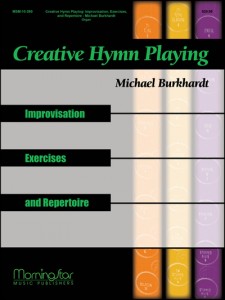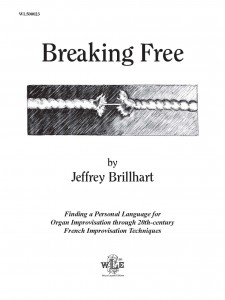Jan Overduin
Making Music: Improvisation for Organists
The best summary of this book can be found in the opening quote and paragraph from the preface:
There is no mystique or magic to improvising, just consistent and conscientious practice.
–Gerre HancockIt has been said of Jean Langlais that he could teach stones to improvise, and it is true that his own example and his enthusiasm for the art of improvisation were inspiring and contagious. But miracles are as rare in improvisation as they are in any field, and after several decades of teaching improvisation, I have come to rely less on the miraculous and more on clearly laid out exercises and assignments. The aim of this book is to show the student that improvisation is within the grasp of everyone, even those with minimal keyboard skills. To some this might seem like a tiny miracle, but it is achieved by hard work and an encouraging teacher rather than by chance.
What an inspirational message for the beginning student!
Jan Overduin also explains in the preface his belief that “the traditional comes first, then the modern.” Thus, this book is primarily focused on common practice tonal language. He begins with melody alone, moves slowly through one or two chords, thirds and sixths before arriving at the pentatonic mode. Even though the harmonic language is simple, he introduces contrapuntal concepts early by having each voice play a different rhythmic species. Only in Chapter 29 on Toccata is there any sort of exercise that deviates from tonal harmony (when the right hand is to play white keys and the left hand black keys).
Each chapter begins with an explanation of the material to be covered and then provides assignments with examples for further clarification and/or completion. Most chapters have 5-7 assignments, though the chapter on ostinato has 12 and rondo only has one. While each assignment usually grows out of the material that appeared previously, occasionally there are a few larger leaps that might benefit from some teacher guidance or further demonstrations. The examples and assignments are clear enough that they seem quite easy and approachable. A student can most likely follow this book without the guidance of a teacher, but should be careful not to skip over the assignments that seem too easy. While the explanations seem simple, I know that integrating the skills to be able to accomplish the given tasks will take time and practice.
In comparison to other methods reviewed so far, this may be one of the best places to start, especially if one wishes to improvise in any common practice harmonic style. Also published by Oxford University Press, Improvising: How to Master the Art by Gerre Hancock, while offering similar clear assignments for each chapter topic, would really work best as a follow up volume to this one, allowing review of the material covered here and advancement into larger forms. Creative Hymn Playing by Michael Burkhardt covers some of the same material as Jan Overduin, but is more limited in what it offers. Breaking Free by Jeffrey Brillhart would also make an excellent second or companion volume to this one depending upon the interests and aptitudes of the student. Many of the assignments in form and structure in this book could be used with the harmonic instruction of Breaking Free.




